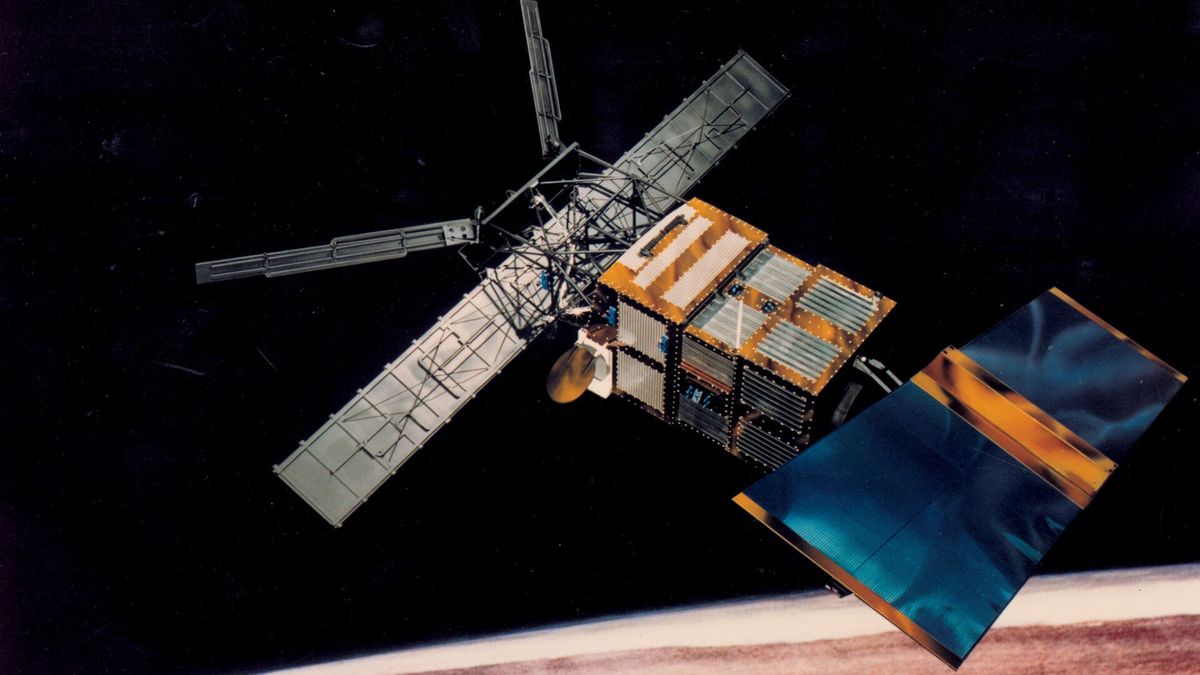A dead European satellite fell back to Earth today, bringing an end to its nearly 30-year life in space.
The European Space Agency’s (ESA) European Remote Sensing 2 (ERS-2) satellite reentered Earth’s atmosphere at 12:15 EST (1715 GMT) over the Pacific Ocean. The fall ended a nearly 13-year deorbiting campaign that began with 66 engine burns in July 2011, depleting the spacecraft of remaining fuel.
“We have confirmation of the atmospheric reentry of ERS-2 at 17:17 UTC (18:17 CET) +/- 1 minute over the North Pacific Ocean between Alaska and Hawaii,” ESA Operations posted to X along with Google Maps coordinates of where the satellite fell to Earth.
Related: Big, doomed satellite seen from space as it tumbles towards a fiery reentry on Feb. 21 (photos)
It’s unclear if any debris made its way down to the surface after ERS-2 reentered the atmosphere, but none of the fragments contain any toxic or radioactive substances, ESA assured the public in an FAQ published prior to reentry.
Astronomer Jonathan McDowell posted a track of the satellite’s reentry on X, showing the location of a debris trail recorded by radar systems operated by the National Oceanographic and Atmospheric Administration (NOAA)
ERS-2 reentry track. Location of later NOAA radar trail indicated as white polygon S of Alaska coast pic.twitter.com/1wKJqC0UfmFebruary 21, 2024
ERS-2 was roughly the size of a school bus and weighed 5,547 pounds (2,516 kilograms) when full of fuel at liftoff. When it fell to its fiery demise today fully depleted, it weighed in at around 5,057 pounds (2,294 kg). While fairly large, the satellite’s mass isn’t an outlier when it comes to reentered space junk. An object of similar size falls into Earth’s atmosphere every few weeks.
When it launched, ERS-2 “was the most sophisticated Earth-observation spacecraft ever developed and launched by Europe,” ESA wrote in its FAQ about the reentry. The satellite was designed to collect data about Earth’s landmasses, ice caps and oceans and even helped monitor the aftermaths of natural disasters.

ERS-2 fell to Earth in what’s known as a “natural reentry,” meaning mission controllers had no way to maneuver or otherwise control the satellite during its descent towards the atmosphere. Its batteries were discharged prior to reentry, and all electronic systems were deactivated long before it began its fiery descent.
While any “natural” reentry such as this has a chance of dropping debris onto Earth’s surface, the chances that any remaining debris could harm people or property on the ground are incredibly low. ESA’s FAQ about the reentry notes that one’s chances of being struck by lightning are 65,000 times higher than one’s risk of being struck by space debris in a lifetime.
The odds that any one person is hit with falling space debris each year is 1 in 100 billion, ESA says.

